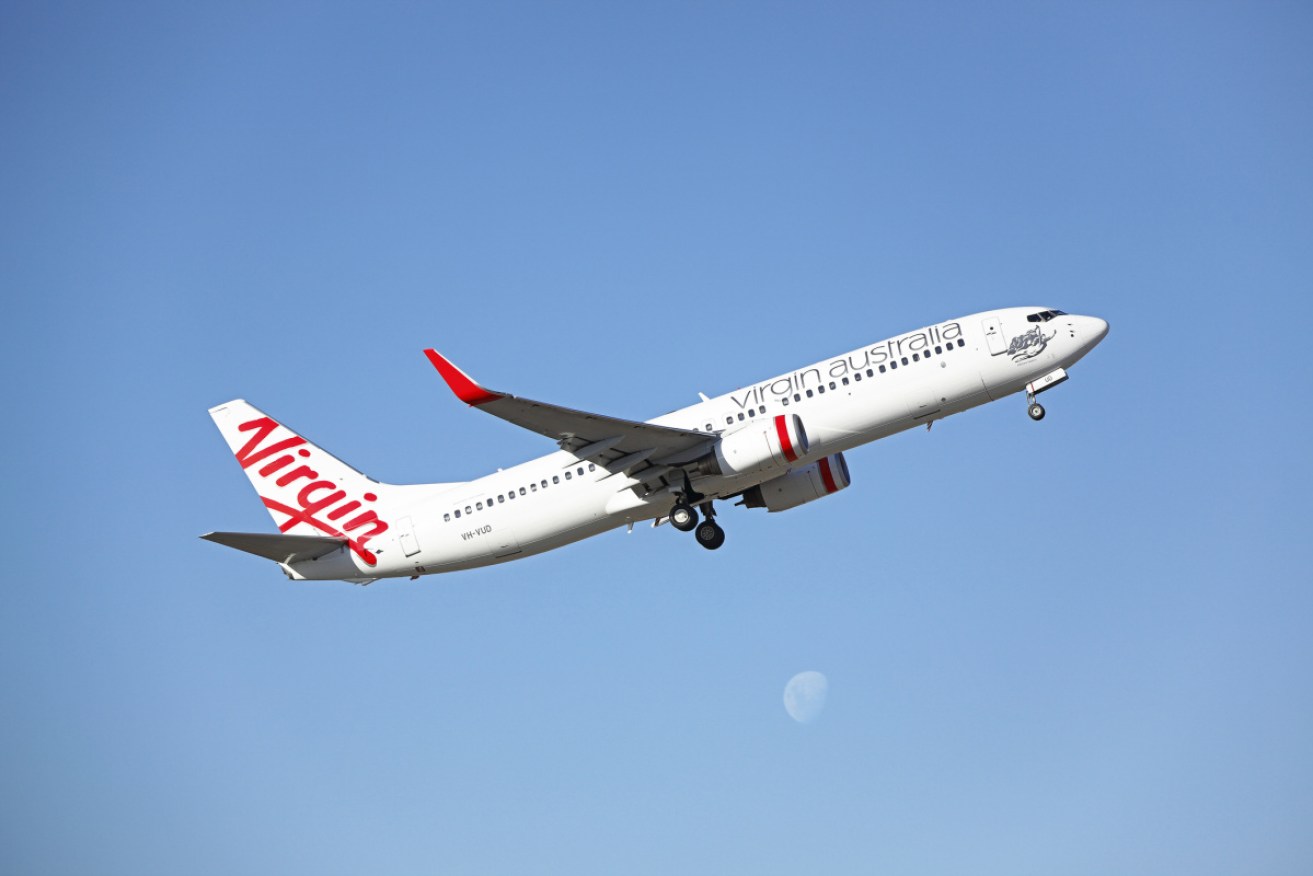What Virgin must do to save itself from financial ruin


Virgin Australia has posted a "disappointing" full-year loss of $349.1 million. Photo: Getty
Virgin Australia should go back to being a budget airline to turn the financially-embattled airline’s fortunes around, an industry insider says.
The comment came after Virgin CEO Paul Scurrah last week sent an internal memo reportedly informing staff the company would pause or halt any new projects or reforms in a bid to return the airline back to profit in what is being seen as a line in the sand for the struggling carrier.
In May, the company announced its 2019 earnings would be $100 million below that of 2018, flagging an expected $35 million full-year loss – that would make seven consecutive years of losses for Australia’s No.2 airline.
In a statement, Virgin said Mr Scurrah had, since he took over in March, “openly stated he has a commitment to return the business to profitability” which involved “looking at the priorities for the business and a review is being conducted across a number of areas”.
Meanwhile the world’s biggest plane-maker, Boeing, looks set to lose its title after reporting a 37 per cent drop in deliveries for the first half of the year – lagging behind rival Airbus – due to the prolonged grounding of its best-selling MAX jets.
A new problem identified with the grounded MAX jets last month has delayed the aircraft’s entry into service until at least the end of September.
Deliveries of the MAX aircraft were stopped in March after an Ethiopian Airlines crash killed all 157 people on board.
Aviation industry veteran Neil Hansford said the way back for Virgin was to return to its original market position as a low-cost airline and abandon aspirations of competing with Qantas.
“If they [Virgin] had just stayed where they were as a Jetstar, they would not have lost the billions they lost,” Mr Hansford said.
“They wanted to be a new Ansett, which wasn’t so bad when they were chasing the economy market but they decided to walk away from that low-cost model and chase the business market.
“I wouldn’t spend my time and money chasing Qantas in the premium market – get rid of the lounges, do away with Tiger and reorientate the airline to what it was good at, which is low fares and a well-marketed, timely economy airline.”
Mr Hansford said there was still a sizeable market of business travellers who did not want, or were not allowed, to fly business class and just wanted a good economy product.
He also questioned the money and effort going into its international sectors.
“Get out of those big-bodied jets and stop flying to [the likes of] the US. Just go and run domestic and regional flights and give real value … to those people who don’t want to fly business. Just stick with shorter-haul sectors like Fiji, Bali, Vanuatu and New Zealand.”

Virgin’s former CEO John Borghetti with Richard Branson in 2010. Photo: Getty
Stay classy Virgin – and fix Tigerair
But another aviation commentator argues the airline must stick to its guns in taking on Qantas, but at the same time also work hard to polish the tarnished reputation of its subsidiary carrier, Tigerair Australia.
He suggested Virgin should even expand its international reach, but to more strategic destinations.
Dr David Beirman, tourism lecturer at the University of Technology Sydney, argued Virgin should ramp up efforts to battle Qantas in the high end of the market, rather than surrender.
“I actually think going back to being a low-cost carrier would be a disaster. First they need to enhance the reputation of Tigerair [Australia] to maintain that low-cost carrier brand. Tigerair is still struggling to overcome the bad reputation it earned when it started out.”
Dr Beirman said Virgin had performed well domestically, but lagged well behind Jetstar and Qantas internationally. So instead of trying to match Qantas – which had a much broader international network – it should consider more strategic destinations in growth markets.
“They should look seriously at China, and one of the big markets flagged by Tourism Australia is India, which is the fastest-growing inbound market,” Dr Beirman said.
The two other big hurdles for Virgin
Both men agreed there were two other key factors in Virgin’s losing battle with Qantas – the dominance of Qantas’ Frequent Flyer (FF) program and Virgin’s “dysfunctional” ownership.
Qantas’ FF program had “almost 13 million members” and was one of the “best, most profitable schemes worldwide”, Mr Hansford said.
According to a 2018 Credit Suisse report, it generates more than $400 million a year in profit for Qantas – more than it makes flying passengers overseas.
Dr Beirman said the FF program had a strong brand and identity, and was a potent driver for travellers to defer to Qantas when choosing a carrier.
Another factor was its disparate ownership, they said.
Virgin Australia is owned by Etihad Airways (21 per cent), Singapore Airlines (19.8 per cent), Chinese aluminium producer Nanshan Group (22.4 per cent), China’s HNA Group, which part-owns Hainan Airlines (13 per cent) and Virgin Group (8 per cent).
Mr Hansford said it was a “dysfunctional” jumble of shareholders each with different motives for investing in the carrier, which made it hard to bring about reform.
Dr Beirman described Virgin’s ownership as a “disparate bunch”, which made it hard for the airline to control its financial future, particularly compared with other airlines.
“When you are an airline and you are captive to too many owners, it does limit the way you operate,” he said.
After trading as high as 70 cents in March 2010, Virgin shares on Tuesday closed at 16.5 cents.








